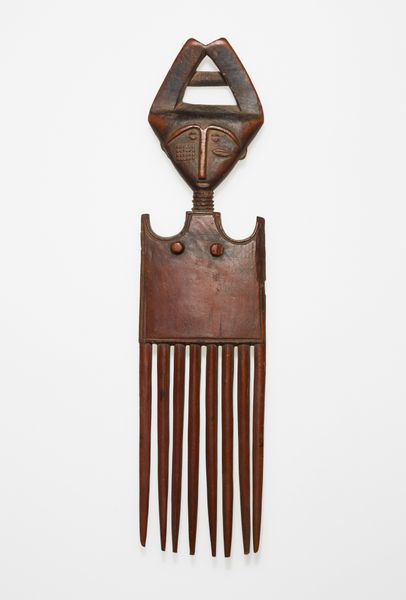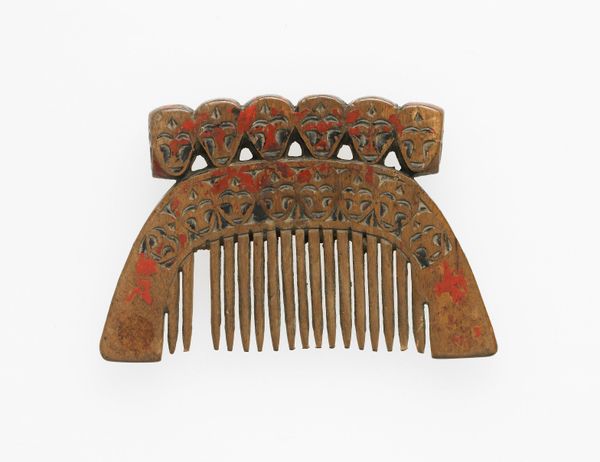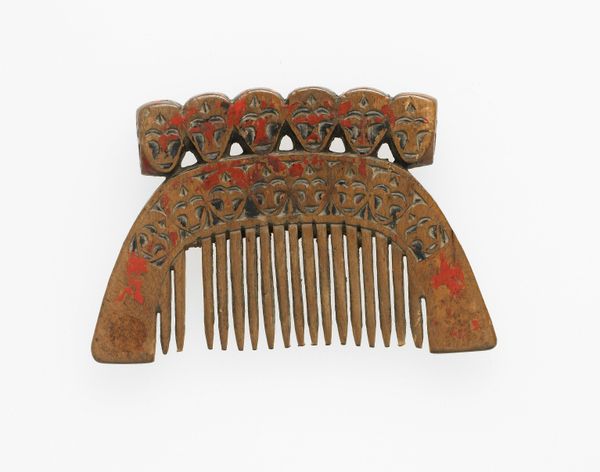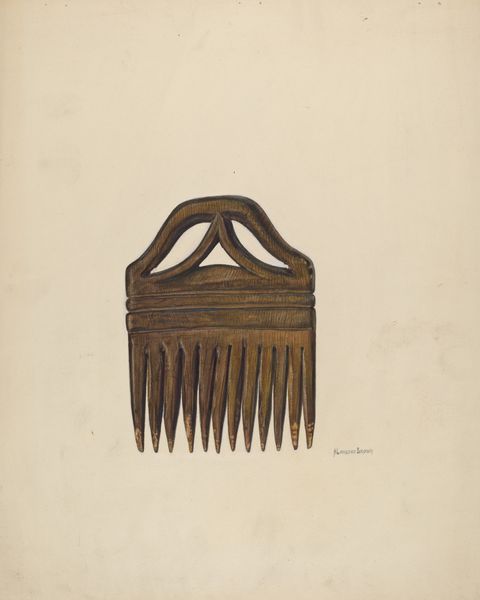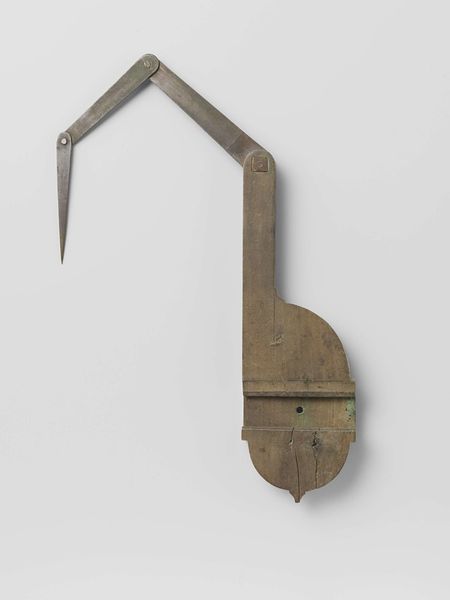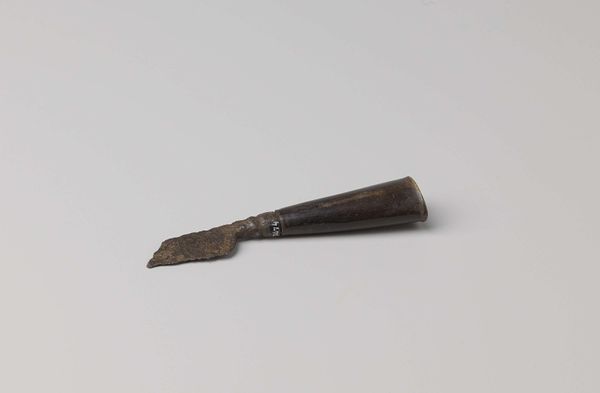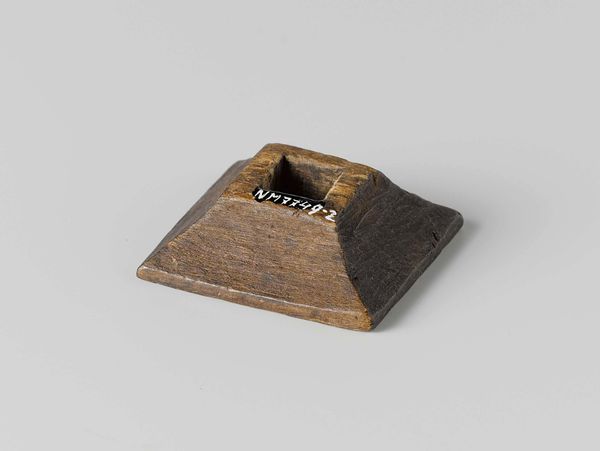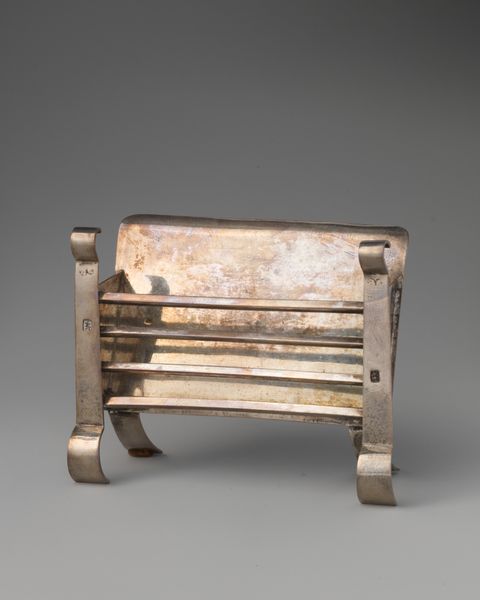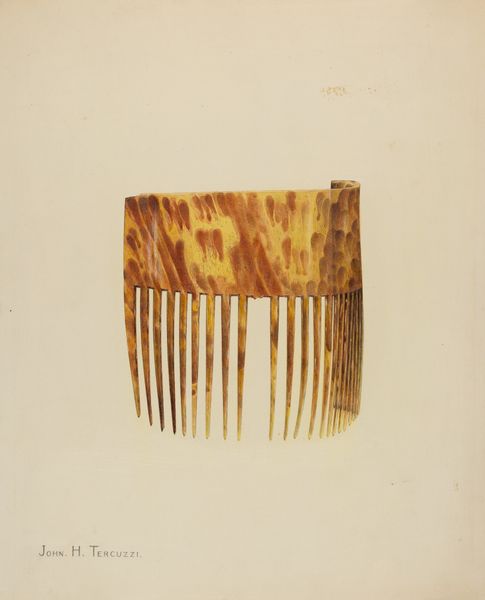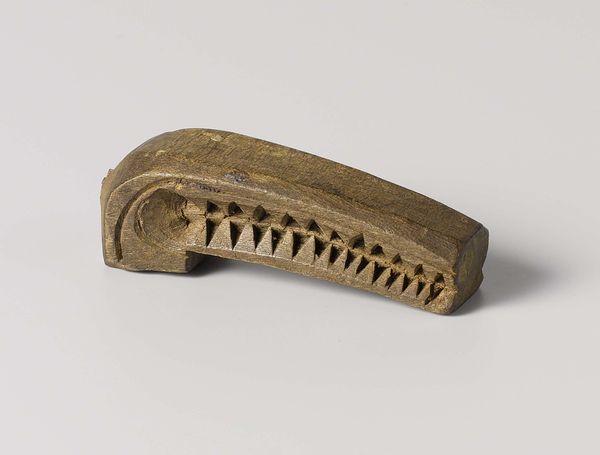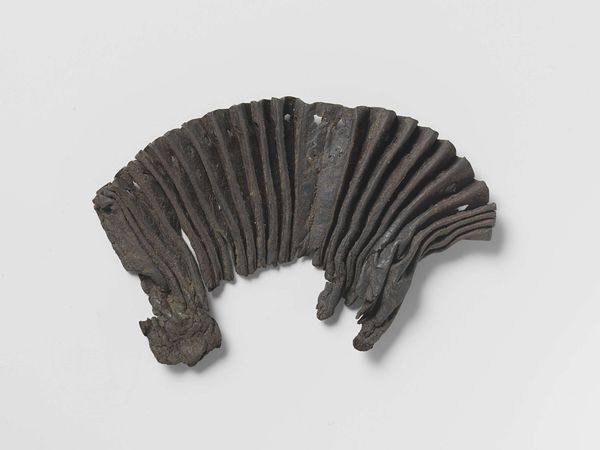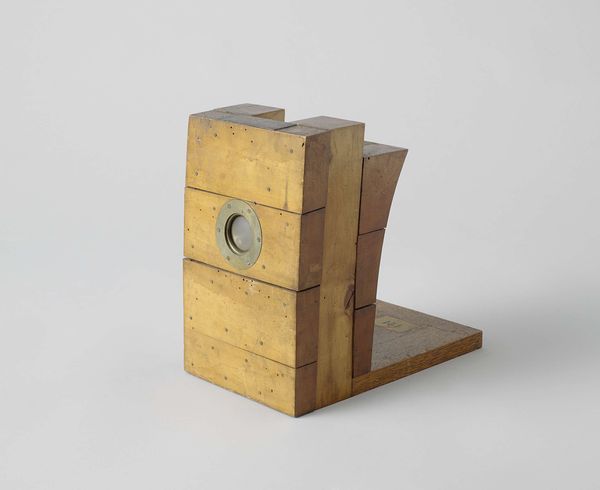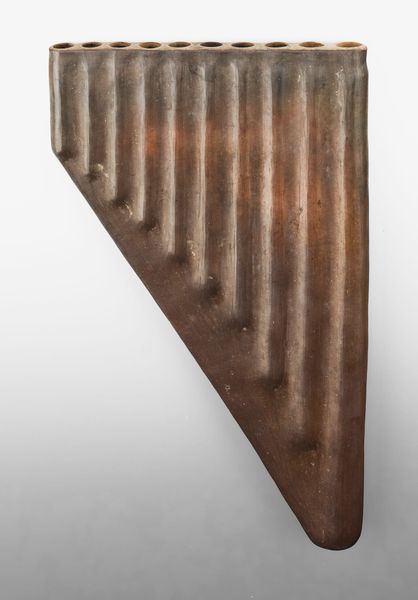
drawing, carving, wood
#
drawing
#
organic
#
medieval
#
carving
#
11_renaissance
#
line
#
wood
Dimensions: height 5 cm, length 4 cm
Copyright: Rijks Museum: Open Domain
Editor: Here we have an object entitled "Personal Effects," likely made between 1590 and 1596, housed in the Rijksmuseum, and crafted from wood. It looks to be a comb. It's so fragile, almost fossilized. What strikes you about it? Curator: The choice of wood as a material speaks volumes about the accessibility of resources in that era. We often forget the value of everyday objects like combs. This wasn't some mass-produced commodity; it was carefully carved. Do you consider the labor involved? Editor: I do now! It looks so time-consuming. All those individual teeth precisely cut... Curator: Precisely! Think about the skill required, the tools available. This wasn't a decorative object destined for a gallery, it was a tool. A crucial part of someone's daily ritual, which elevates it from mere utility to something more meaningful, almost ceremonial. Editor: So, the value lies not in the artistry per se, but the means and social context of its production? Curator: Exactly. And consider the ‘personal’ in “Personal Effects.” The material carries residue – not just physical dirt, but also a trace of labor, ownership, a past user whose identity is now obscure. This simple comb reveals the history of production and the experience of ordinary life. What stories could it tell about social status or the availability of such objects? Editor: I had not considered those questions at all. The wear and tear is really telling; It emphasizes its functionality over aesthetics. Curator: That wear tells a story. Each missing or broken tooth speaks of use, time, and ultimately, decay. And through decay we come to understand its temporality, which ultimately mirrors our own. Editor: It gives so much importance to what it’s made from and what it has gone through. Thanks, I’m certainly seeing it differently. Curator: Indeed. The material conditions of its creation and use unlock far richer narratives than style or iconography alone ever could.
Comments
rijksmuseum about 2 years ago
⋮
Each crewman had his own sea chest for his personal belongings. These wooden chests have since perished, only the locks and little keys remain. To kill time, the men made music and played sports. A drumstick and a flute were found on Nova Zembla. The ball is made of whalebone and was used to play ‘kolven’, a kind of hockey. The little comb was used to remove headlice.
Join the conversation
Join millions of artists and users on Artera today and experience the ultimate creative platform.
